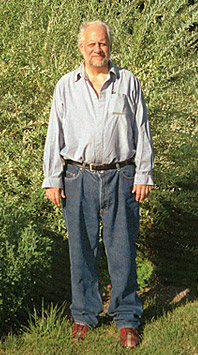Garden Writers Redux
After giving a speech to 600 garden writers in North Carolina last week, I returned in a state of uncertainty—had anyone heard the underlying message? It was too cerebral, I think, to read a speech to a bunch of pumped up enthusiasts who wanted to chat about the gorgeous Sarah Duke Gardens that surrounded us. So, I’ll try again.
Dear Garden Writers
As we plant our flowers and vegetables, we are different from the people we were just one year ago. Turning up the soil, we enrich it with a new and improved compost elixir. We endeavor to build on last year’s successes and correct or avoid our past missteps.
Gardening tastes evolve, shift and expand. Maybe this will be the year we create a colorful oasis in the shade, or fashion a meandering border like one of Mrs. Jekyll’s. Over the winter you’ve been using more and more root vegetables—parsnips, rutabaga, etc.—in soups and dishes. Perhaps they deserve their chance in the sun. And there are so many lovely and fragrant climbing vines, where shall we grow those?
We in the seed and plant business are also in the business of re-creating ourselves each year. We seek to answer and anticipate the changing tastes and needs of gardeners.
Each year at Heronswood, Burpee and The Cook’s Garden, we want to inspire and excite our customers with new varieties. We look at every phase of the customer experience, and try to improve how we do things. We want to make the process as fast, easy and informative as possible.
When gardeners come to one of our sites or order from our catalogs, we want them to feel a serene confidence in choosing us. We want customers to be, not just satisfied, but substantially happy. From time to time, we hear customers who are, in fact, ecstatic.
It’s time for us in the gardening business, and writers, to reexamine our approach and get better—a lot better. We have an extraordinary story to tell. People—millions of them—are waiting to hear it.
And we must continue to get better. We are privileged to work in such a magnificent field, one with so many fascinating dimensions. There are so many paths to the garden.
From looking at gardening catalogs, websites and journalism, you would think we want to keep this passion of ours a secret. We’re parochial. We tend to talk in a sleepy monotone, scarcely audible in our noisy world.
I’m not advocating hype, hard-sell or finger-jabbing ferocity—although I know some of you can jab with the best of them. I could show you jab-wounds. Far from it: I’m advocating persuasion and seduction. And, above all, knowledge. Give them what the British call “shiny bits”.
Consider other forms of popular recreation: music, sports, design, food, fashion, fitness, reading, popular entertainment. The people in those fields bring bravado and brio to their writing. Good writers care about their subject and make you care. Everyone remembers a good story.
Good writers whet your appetite, fire your curiosity, inspire you. They convey a conviction and point of view that turns you on.
Let me tell you something. Gardening is sexier, smarter, cooler and more interesting by far than music, sports, design, food, fashion, fitness, reading, or popular entertainment. It’s more creative, more dimensional, more engaging and deeper than any of those things. Gardening is the real deal, the last, best refuge from vulgarity and a dumbed down culture.
There are going to be millions of readers wanting to know about gardening. Vegetables have become the new rare perennials, while the latter are utterly mainstream in the garden world. Don’t pigeonhole yourselves as “garden writers”. Just write features about the “news” that is the current explosion in gardening and wave it in your editor’s face. “Over here! Headline story!” The good ones will hear you. Remember: great first sentence.
I’ve given about 100 interviews in the past year, and most were to non-garden writers. Reclaim your place in the publishing world, both offline and on.
There’s another side to this situation, too, and that is the business. We in the product vendor community have to step up to the plate as well, and do more creative advertising.
No slackers allowed. No hesitation on this particular battlefield. It’s a moment to be bold, if there ever was one. Imagine: a growth industry in the midst of a recession. There are few better opportunities than the one facing us in the next several years.
Thank you.
















































